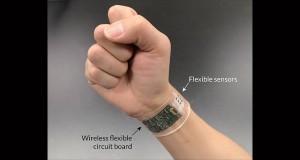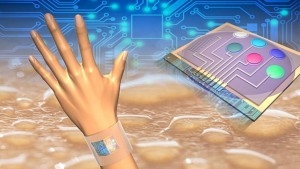

This new technological breakthrough is thanks to developments made by US researchers from the University of California, who have been advancing the general idea found in wearables today. The unnamed device, as described in the journal Nature, works just like other wearables by communicating with an accompanying smartphone app. It is also worn on the body, except this time, as a film directly on the skin in order to monitor the chemical composition of perspiration. This is a lot more data than what a typical wearable device can gather (such as walking pace). In fact, you’d be surprised just how much your sweat can say about your overall health.
Lead researcher, Professor Ali Javey, says sweat analysis isn’t new, but is already being used in the health industry for “applications such as disease diagnosis, drug abuse detection and athletic performance optimization”. Further, because sweat is so “rich in physiological information, it has been difficult to collect and analyze”. The team of researchers have found that in order to gather the necessary data and be able to transmit it, they would need to incorporate multiple sensors and a flexible circuit board computer. Sticking to human skin and activated by (small amounts of) perspiration, the 5 sensors are able to measure temperature and four chemicals- sodium, potassium, glucose, and lactate (ABC).



 Laptop & Tablet Parts
Laptop & Tablet Parts




















